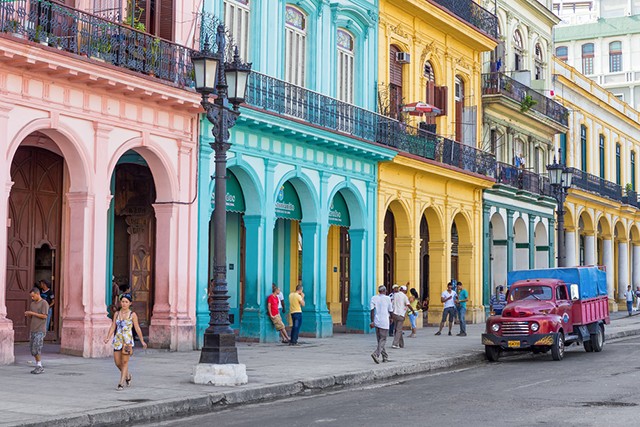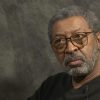By Jonas Gamso, Truthout

A street in Havana, Cuba. (Photo: Kamira / Shutterstock.com)
In response to the recent thawing of relations between the United States and Cuba, the focus of much US media has been on politics – on Obama’s executive action, on the Republican response and on the consequences for the Cuban political regime.
Yet in light of the inevitable reestablishment of trade and investment relations, the implications for Cuba’s economic development also merit exploration. The consensus seems to be that US sanctions have stifled Cuba’s development and that new trade and investment from the United States will help to repair the damage done by the embargo and by the policies of the Castro regime. However, a closer look at the relationship between economic openness and development reveals a more nuanced understanding of post-embargo Cuba’s development trajectory.
US sanctions have indeed been detrimental to the national economy. Cuban officials have estimated that the island nation experienced losses of approximately one trillion dollars due to the embargo. Nevertheless, Cuba’s development has thrived in some respects during this period, while the economies of more open Latin American countries have often stagnated. In fact, while Cuba does stand to benefit from the restoration of economic relations with the United States, this is largely attributable to the developmental policies of the Cuban state during the embargo.
With access to goods and services from the United States curtailed in the context of Cuba’s economic seclusion, the Castro government had little choice but to pursue an internally focused approach to development. This strategy helped Cuba to develop three characteristics that will interact with open trade and investment to foster high levels of economic growth and development in post-embargo Cuba. These are 1) low levels of inequality; 2) a highly educated population; and 3) a diversified basket of potential exports, including high-skill intensive goods and services.
Two of these characteristics – low levels of inequality and a highly educated population – were highlighted by Princeton’s Dani Rodrik as pre-existing conditions necessary for foreign investment to produce economic growth and development in developing countries. Rodrik developed this theory through case studies of South Korea and Taiwan, in which he countered the neoliberal argument that these Asian Tigers grew rich through trade and investment alone. Instead, according to Rodrik, foreign investment worked only in tandem with low levels of economic inequality and high levels of education, which were produced through policies of the Korean and Taiwanese governments before investment barriers were reduced.
Cuba similarly implemented policies to promote an equal and educated population, although clearly did so under different circumstances. The Castro government has espoused a principle of equality and, in practice, has prevented high levels of income and wealth inequality on the island through its control over the wider economy. Cuba’s inequality levels reached a low point in the mid-1980s, at which time Cuba was among the most equal countries in the world, with a Gini coefficient of 0.22. Since then, inequality has increased. The Gini coefficient reached 0.38 in 2000, according to one study, which still set the country well ahead of its South and Central American counterparts in income equality. More recent data is quite sparse, but it is very likely that the island nation still enjoys low levels of inequality by the standards of the developing world.
More impressive still has been Cuba’s record on education during the embargo years, which can be attributed to the efforts of its government since the revolution. Free and accessible education is provided to all Cuban citizens, which has helped the country to achieve nearly universal primary and secondary school enrollment. Likewise, Cuba’s national literacy campaigns have produced youth and adult literacy rates of 100 percent, according to World Bank data. To these ends, the Cuban government allocates a considerably higher percentage of its GDP to education than do other countries of the region, such as Brazil and Argentina.
In keeping with Rodrik’s model, Cuba’s low levels of inequality and high levels of education should allow the post-embargo influx of foreign investment from the United States to produce economic growth and development. Moreover, Cuba’s highly educated work force produces a sophisticated array of exportable goods and services. Thus, while the country does export raw materials, in the form of sugar, oil and petroleum products, and nickel, it also produces high-skill intensive products for export. In particular, the country’s biomedical sector has flourished, leading to its development of several drugs, vaccines and treatments. Cuba also has a robust service sector, with medical services being a particular forte.
Cuba’s production of a diverse and sophisticated basket of potentially exportable goods and services stands in contrast with many other South and Central America countries, which have often become dependent on exports of raw materials and low-skill intensive manufactured goods. Due to these countries’ export baskets, they have traditionally been subject to deteriorating terms of trade, whereby the value of their exports does not keep pace over time with the value of the sophisticated goods that they import from the United States and other advanced industrialized countries. In contrast, Cuba’s exportable goods and services are relatively sophisticated, such that the country should be able to avoid this deterioration once trade relations with the United States are normalized.
In sum, while the embargo has been detrimental to Cuba’s economy in many respects, economic isolation has had the positive effect of forcing Cuba to implement the internally oriented development strategy that helped it to achieve low levels of inequality, a highly education population, and a diverse and sophisticated basket of exportable goods and services. Once the embargo has been lifted by Washington, these characteristics will work in tandem with an influx of investment and an increase in trade to provide Cuba with the high levels of economic growth and development that have eluded many of its counterparts in Central and South America.
Jonas Gamso is a PhD candidate in the University of Pittsburgh’s Graduate School of Public and International Affairs, where his research and teaching focus on US-Latin American Relations, international political economy and development.















